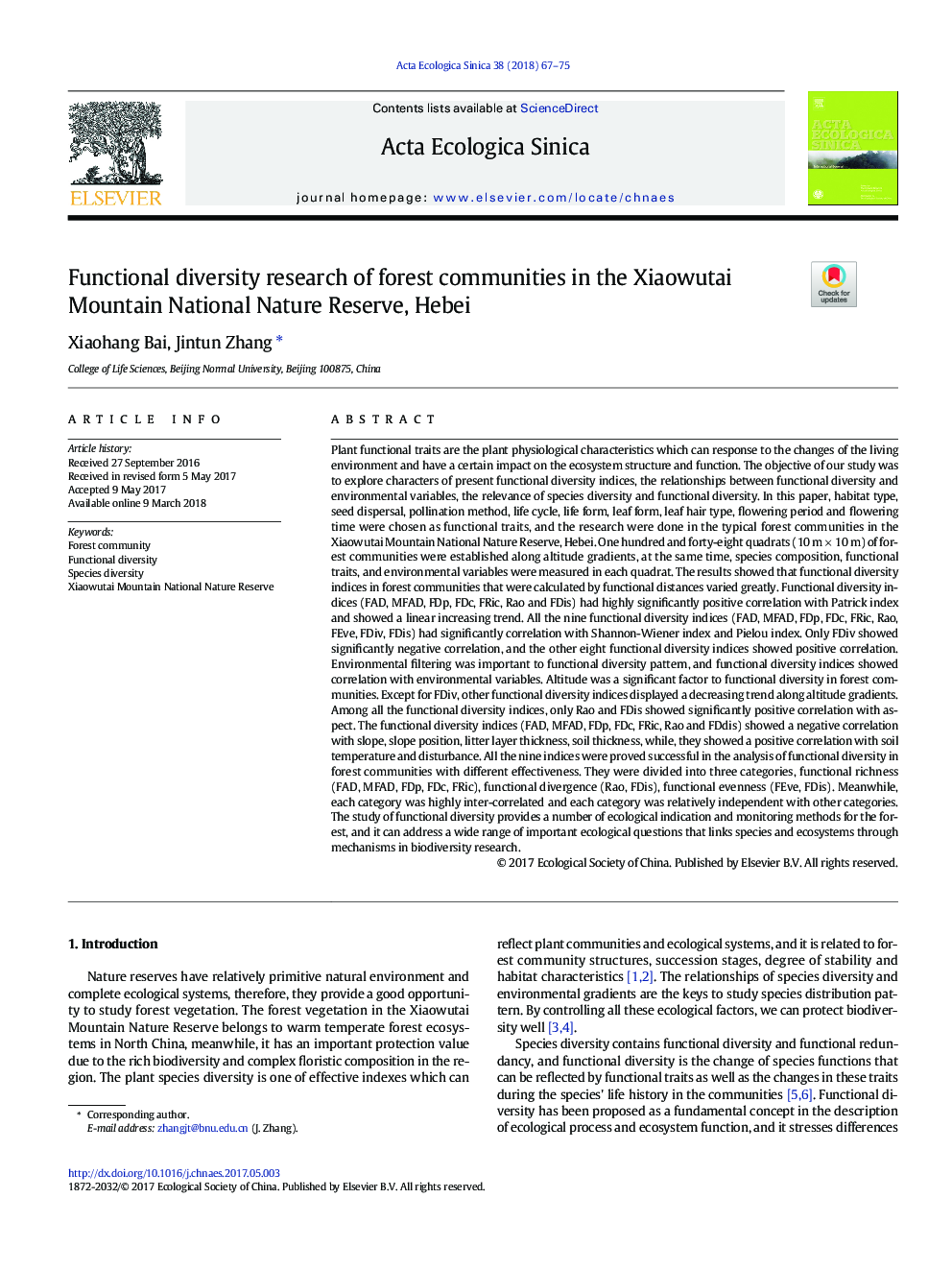| Article ID | Journal | Published Year | Pages | File Type |
|---|---|---|---|---|
| 8846304 | Acta Ecologica Sinica | 2018 | 9 Pages |
Abstract
Plant functional traits are the plant physiological characteristics which can response to the changes of the living environment and have a certain impact on the ecosystem structure and function. The objective of our study was to explore characters of present functional diversity indices, the relationships between functional diversity and environmental variables, the relevance of species diversity and functional diversity. In this paper, habitat type, seed dispersal, pollination method, life cycle, life form, leaf form, leaf hair type, flowering period and flowering time were chosen as functional traits, and the research were done in the typical forest communities in the Xiaowutai Mountain National Nature Reserve, Hebei. One hundred and forty-eight quadrats (10 m Ã 10 m) of forest communities were established along altitude gradients, at the same time, species composition, functional traits, and environmental variables were measured in each quadrat. The results showed that functional diversity indices in forest communities that were calculated by functional distances varied greatly. Functional diversity indices (FAD, MFAD, FDp, FDc, FRic, Rao and FDis) had highly significantly positive correlation with Patrick index and showed a linear increasing trend. All the nine functional diversity indices (FAD, MFAD, FDp, FDc, FRic, Rao, FEve, FDiv, FDis) had significantly correlation with Shannon-Wiener index and Pielou index. Only FDiv showed significantly negative correlation, and the other eight functional diversity indices showed positive correlation. Environmental filtering was important to functional diversity pattern, and functional diversity indices showed correlation with environmental variables. Altitude was a significant factor to functional diversity in forest communities. Except for FDiv, other functional diversity indices displayed a decreasing trend along altitude gradients. Among all the functional diversity indices, only Rao and FDis showed significantly positive correlation with aspect. The functional diversity indices (FAD, MFAD, FDp, FDc, FRic, Rao and FDdis) showed a negative correlation with slope, slope position, litter layer thickness, soil thickness, while, they showed a positive correlation with soil temperature and disturbance. All the nine indices were proved successful in the analysis of functional diversity in forest communities with different effectiveness. They were divided into three categories, functional richness (FAD, MFAD, FDp, FDc, FRic), functional divergence (Rao, FDis), functional evenness (FEve, FDis). Meanwhile, each category was highly inter-correlated and each category was relatively independent with other categories. The study of functional diversity provides a number of ecological indication and monitoring methods for the forest, and it can address a wide range of important ecological questions that links species and ecosystems through mechanisms in biodiversity research.
Related Topics
Life Sciences
Agricultural and Biological Sciences
Ecology, Evolution, Behavior and Systematics
Authors
Xiaohang Bai, Jintun Zhang,
